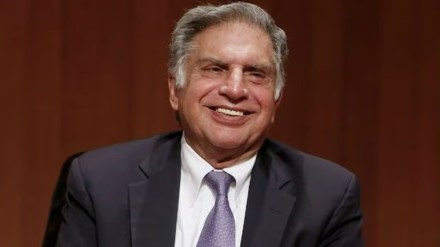Ratan Naval Tata (RNT) did more than the work of a lifetime during his 21-year chairmanship of the Tata group that ended in 2012. The group was 51 times bigger than in 1991 and the growth numbers for profits were similarly impressive. He capitalised splendidly on the big opportunity that was information technology services, shored up the group’s shareholding structure, welded companies together with initiatives in group branding, and made some bold moves. When he took over from JRD Tata at age 53, the group’s leading companies were managed by ageing satraps who clearly didn’t think much of him because of his undistinguished track record till then. That they were wrong is evident from the way RNT transitioned a staid group to a brand that stood for vibrancy and energy, innovation and even daring, while still doing business the ethical Tata way.
But these stellar achievements were a mere sideshow in the life of a man who was undeniably India’s tallest businessman even though he never figured in any listings of billionaires. One of the reasons for this is his belief that India’s ambitions should be global, not local. Its companies should manufacture in and for the world, not just focus on the domestic market. The earliest evidence of his thought leadership is in a document known as the Tata Plan that he authored in 1983. This is what he wrote: “We have two guiding arrows. One points overseas, where we want to expand markets for our existing products. The other points right here, to India, where we want to explore the large mass market that is emerging — not by following but by doing something that hasn’t been done before.” RNT has indeed walked that talk: When he took over, the group’s global revenues were only 10%; when he left, it went up to 67% with operations in more than 100 countries. One wishes many more in India Inc. had taken inspiration from him instead of choosing to be giants just at home.
There were a few misses, too. Some of his pioneering moves like the Nano car failed because of perception issues; he was unable to see the opportunities in telecom; and his handling of the Cyrus Mistry affair should have certainly been much better. Certain other questions linger, which he left till it was too late. Apart from a quick succession at Tata Trusts, there is now a need to look at the present opaque group structure, where charitable trusts hold controlling shares in the group holding company of the country’s largest business house and, therefore, exercise effective control of most of the listed operating companies. These, in turn, own shares in the holding company.
But the fact that he left a rock solid foundation is evident from the Tata group’s performance and its ambitious moves even after he was long gone from the corner office. The main reason why India will miss RNT is his obsession to safeguard and strengthen the all-important tenet of integrity that the Tata group has always been known for. He has also been super-active in philanthropy to fulfil his lifelong wish to touch as many people at the bottom of the pyramid through Tata Trusts. RNT clearly believed “patchwork philanthropy” — giving a bit of cloth here and food there — would not go far. So he had moved away quite early from a benefactor-dependent model to a partnership model. RIP, Mr Tata.
